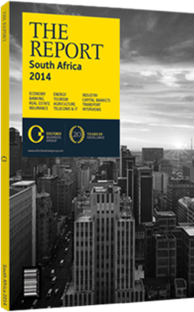Oil & gas
The Company
Sasol is an integrated oil and gas company with substantial chemical interests based in South Africa, where it enjoys a leading 35% share of the liquid fuels market. Its core business is the production of liquid fuels and chemicals from coal using Fischer Tropsch technology. The company has also developed natural gas reserves in Mozambique in partnership with the local government. The gas is mainly sent via a pipeline to South Africa, where it is fed into Sasol’s synthetic fuels and chemicals process, in addition to being sold into the local industrial market.
A major business development for Sasol was its two, $1bn shale gas joint ventures in Canada, where it is now partnered with a Petronas subsidiary. Sasol originally planned to use gas from these ventures to implement a gas-to-liquids (GTL) plant in the US, although a final investment decision is a few years away. The company’s other South African energy businesses include coal mining (internal use and exports), conventional oil refining and marketing, upstream oil and gas, and synthetic gas production and marketing. Sasol produces a wide range of chemicals in South Africa, Europe, the US and Malaysia, including polymers, solvents, olefins and surfactants, and nitro-based chemicals.
Sasol’s profitability is currently driven by the price of oil and the rand-dollar exchange rate, as liquid fuel prices in South Africa are regulated and linked to international dollar product prices, whereas Sasol’s cost base remains predominantly rand based. Over the last 10 years the correlation between share prices and rand-denominated Brent oil prices has been around 0.95.
A new important development is Sasol’s planned 1.5m-tonne-per-annum ethane cracker in the US, with a final investment decision expected soon. We remain reasonably positive on Sasol’s investment case, as we believe the company can successfully execute the US ethane cracker at attractive economics. Sasol is also undertaking a significant cost reduction programme, which will not be reflected in our forecasts until detail is provided in the FY14 results. In addition there is the possibility of a re-rating as Sasol changes its business model, revises its transfer pricing policy and improves segmental reporting, particularly for chemicals.
Develoment Strategy
Its core domestic synthetic fuels business is driven by production maximisation, cost control, energy efficiency and capacity expansion, which it looks to achieve by improving operational stability, meeting its target of keeping cash fixed-cost inflation below PPI and increasing energy self-sufficiency through gas-powered turbines and expansion capex.
Sasol primarily aims to grow internationally through its $5bn-7bn US ethane cracker project. The company may also look at establishing GTL footprints in areas where access to lower-priced natural gas is possible. This strategy seeks to take advantage of the continuing differential between oil and equivalent gas prices. Sasol uses its technology to convert low-priced gas into higher-priced transportation fuel. It already operates a 34,000-bpd GTL facility in Qatar and is looking to establish one in Uzbekistan. The company’s North American expansion plans are ambitious, with combined capex equivalent to more than half the company’s current market capitalisation. Sasol plans on phasing these two projects, with the ethane cracker likely commissioned in 2016-17, followed by phase 1 of the GTL plant.
Sasol also has expansion plans in chemicals, where it can achieve a back-integrated feedstock position or is able to secure competitively priced feedstock. Sasol has been the subject of several historical competition authority investigations, including in polymers and diesel. Sasol was most recently fined over R500m ($47.4m) for alleged excessive pricing of propylene and polypropylene and has decided to appeal this decision.
Draft carbon tax legislation could also have an impact on the company, given that carbon dioxide emissions at its Secunda operations are over 60m tonnes per annum. We estimate the potential impact to be in the 7% region on earnings and current valuation; however, we note the legislation has already been delayed by a year and may be revised into a less onerous format.
You have reached the limit of premium articles you can view for free.
Choose from the options below to purchase print or digital editions of our Reports. You can also purchase a website subscription giving you unlimited access to all of our Reports online for 12 months.
If you have already purchased this Report or have a website subscription, please login to continue.

